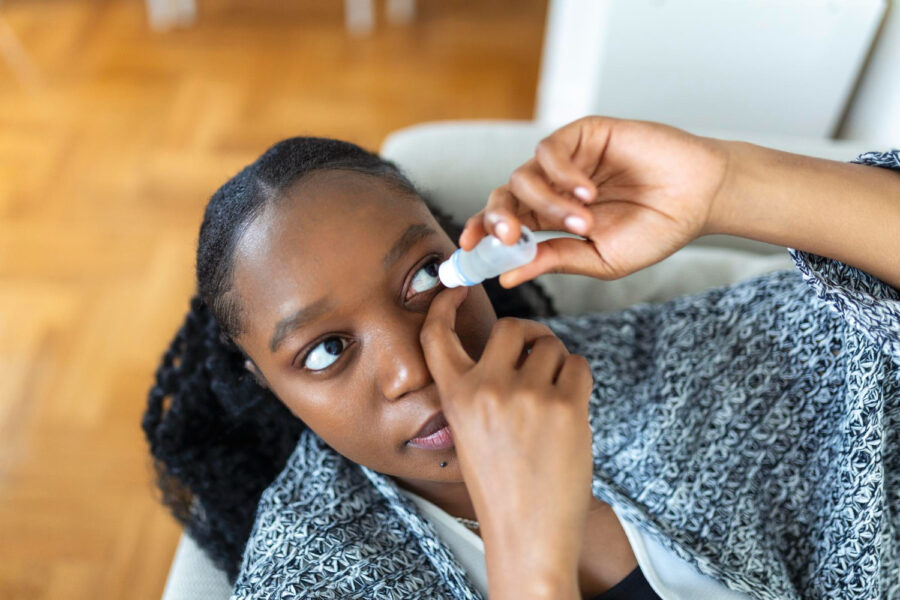Understanding the Challenges of Contact Lens Wear
Contact lenses can sometimes disrupt the natural tear film that keeps our eyes lubricated. This disruption can lead to dryness, a gritty sensation, and even blurred vision. Furthermore, some individuals may experience allergies or sensitivities to certain lens materials or cleaning solutions, exacerbating these symptoms. We recognize that these challenges can be frustrating, and we’re here to offer solutions.
Types of Eye Drops and Their Compatibility with Contact Lenses
Understanding the various categories of eye drops is essential for proper eye care. Healthcare providers typically classify eye drops into several distinct categories, each serving specific purposes:
Several types of eye drops are available for contact lens wearers, each designed to address specific needs:
Saline Solution: While not technically a lubricating eye drop, saline solution is essential for rinsing and storing contact lenses. It’s crucial for removing debris and protein deposits that can irritate the eyes. We emphasize the importance of proper lens hygiene for optimal eye health.
Rewetting Drops: These are designed to rehydrate contact lenses and provide relief from dryness. They are typically thinner and formulated to be compatible with contact lens materials. We often recommend rewetting drops for mild dryness or discomfort.
Lubricating Drops: These drops offer more substantial lubrication and can be helpful for individuals experiencing moderate to severe dryness. They create a protective barrier on the eye’s surface, reducing friction between the lens and the cornea.
Artificial Tears: These drops mimic natural tears and provide relief from dryness and irritation. They are often recommended for individuals with chronic dry eye. We encourage our patients to discuss the best artificial tear options for their specific needs.
LASIK: A Long-term Solution to Reduce Eye Drop Dependence
Many contact lens wearers who struggle with frequent eye drop use find that LASIK surgery offers a compelling alternative. Research shows that LASIK can significantly reduce or eliminate the need for daily eye drops associated with contact lens wear.
Benefits of LASIK for Former Contact Lens Wearers
- Reduced dependence on daily eye drops
- Elimination of contact lens-related dry eye symptoms
- Lower risk of eye infections compared to contact lens wear
- Freedom from contact lens solution and eye drop expenses
Best Practices for Eye Drop Usage
For Contact Lens Wearers
- Always verify that drops are specifically labeled “for use with contact lenses”
- Avoid redness-reducing drops containing vasoconstrictors
- Follow the 15-minute rule for medicated drops
- Replace contact lenses according to schedule to prevent deposit buildup
Post-LASIK Care
Post-LASIK patients typically follow a prescribed eye drop regimen that includes:
- Antibiotic drops to prevent infection
- Anti-inflammatory drops to promote healing
- Artificial tears as needed during recovery
Importance of Regular Eye Exams
Regular eye exams are essential for maintaining eye health and ensuring that your contact lenses and eye drops are appropriate for your needs. We encourage everyone to schedule regular checkups with an eye care professional. We are committed to providing exceptional eye care and helping our patients achieve clear, comfortable vision.
Beyond Eye Drops: Addressing Dry Eye
While eye drops can provide relief from dryness and irritation, they may not address the underlying cause of dry eye. We offer comprehensive evaluations for dry eye and can recommend a range of treatment options, including lifestyle changes, prescription medications, and in-office procedures. We are dedicated to providing personalized care to each of our patients.
References:
Office of the Commissioner. (2018, January 19). Contact lens care. U.S. Food And Drug Administration. https://www.fda.gov/consumers/womens-health-topics/contact-lens-care
LASIK — Laser eye surgery. (2024, August 9). American Academy of Ophthalmology. https://www.aao.org/eye-health/treatments/lasik



